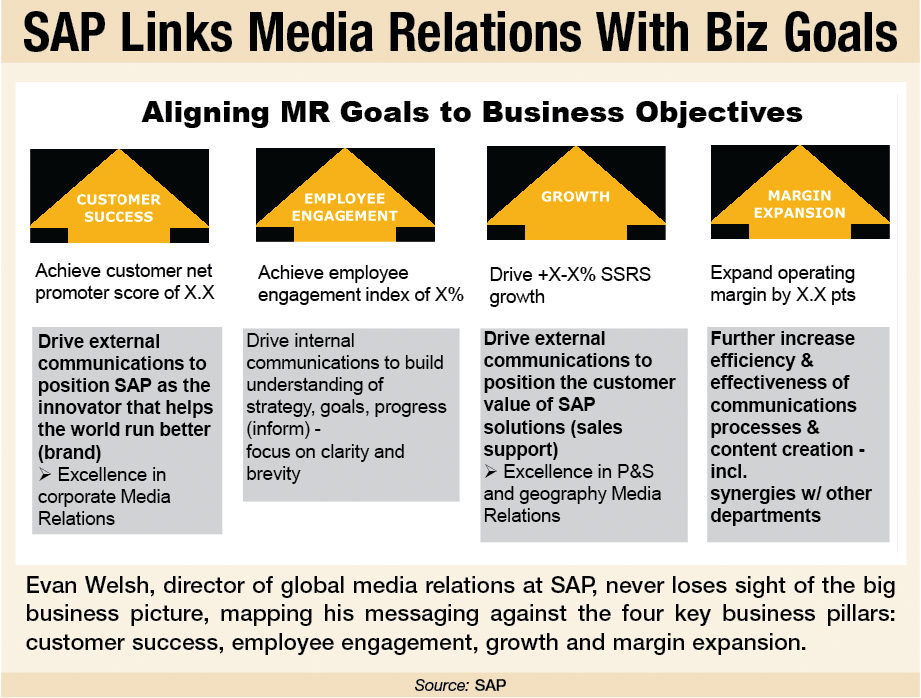On Wednesday, April 18, 2012, the space shuttle Discovery took its final flight—on top of a 747—to Washington, D.C.’s Dulles Airport, where it was to be transferred to its retirement home, the Smithsonian’s Steven F. Udvar-Hazy Center in Chantilly, Va. Discovery flew 39 missions into space, the most of any spacecraft, and was at the forefront of space and earth science exploration.
Meanwhile, as Discovery flew over the Washington Monument, 250 public relations pros gathered just a moon rock’s throw away at the JW Marriott for some exploration of another sort: PR measurement. You could say that for PR practitioners, successful measurement of PR is the final frontier. Just like the U.S. government’s view that the shuttle’s return on investment couldn’t justify billions of dollars in a struggling economy, ROI vexes the PR industry as well.
Thus, conference attendees were clearly struggling with not only collecting the right data around their communications campaigns and programs, but transforming that data into meaningful insights that show communications efforts are significant drivers of business.
BE A VISIONARY
“We can track and collect all of this data, and still not have any insights,” says Rohit Bhargava, senior VP, global strategy & planning, at Ogilvy PR. So Bhargava stresses what he calls “visionary measurement,” which focuses strictly on the business impact of PR instead of volume—the number of media impressions and number of followers, for example.
Yet proving true ROI could be fleeting. In fact, does ROI in its traditional sense even pertain to public relations efforts? It can, but not in the truest sense of the word, says Don Bartholomew, senior VP, digital and social media research at Ketchum.
In particular, social media data are tough to convert into a financial gain. That’s why it’s important to add “impact” into the mix.
“Impact changes awareness, opinions, attitudes,” says Bartholomew. ROI is conversion; impact can be both tangible and intangible. “Impact is an investment that may be cashed in as ROI over time,” he says.
Thus, in working on social media initiatives with companies that want to know what their return on investment will be in a year, Bartholomew will answer “zero.” “There will be returns down the road with social media, but not right away.”
 |
SOLID RESULTS
That said, numerous ways were shown at the conference on how to link PR objectives with business goals. Evan Welsh, director of global media relations at SAP, says his media outreach goals closely parallel SAP’s business objectives of customer success, employee engagement, growth and margin expansion (see the graphic for details).
Much of a successful measurement mindset depends on moving from outputs to outtakes and then outcomes, says Katie Paine, CEO of measurement firm KDPaine & Partners. Outputs feature key performance indicators such as:
• Share of negatives
• How many people saw it?
• Did your POV or messages get out?
Outtakes/perceptions KPIs include:
• % change in reputation
• % change in relationships
And outcomes/behavior KPIs can help you achieve PR measurement nirvana:
• % change in $$$
• Retention
A critical step that PR pros often ignore in measurement: Show progress through research, says Larry Parnell, associate professor of strategic PR at George Washington University’s Graduate School of Political Management.
“It all comes down to research. Have targeted research methods and present your research to senior leaders in language they understand,” says Parnell. PRN
[Learn more about how to achieve stellar social media results at the PR News Social Media Summit & Taste of Tech two-day event in NYC on June 21-22.]
CONTACT:
Rohit Bhargava, [email protected]; Don Bartholomew, [email protected]; Evan Welsh, [email protected]; Katie Paine, [email protected]; Larry Parnell, [email protected].
Follow Scott Van Camp: @svancamp01

